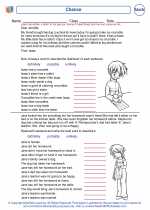Conditional Probability
Conditional probability is a measure of the probability of an event occurring given that another event has already occurred. It is denoted by P(A|B), which reads as "the probability of event A given event B."
The formula for conditional probability is:
P(A|B) = P(A and B) / P(B)
Where:
- P(A|B) = conditional probability of A given B
- P(A and B) = probability of both A and B occurring
- P(B) = probability of event B
Conditional probability allows us to update our understanding of the likelihood of an event based on new information. For example, if we know the probability of it raining on a given day (P(A)), and the probability of having an umbrella with you on that same day (P(B)), we can use conditional probability to calculate the likelihood of needing the umbrella given that it is raining (P(A|B)).
Conditional probability is an important concept in fields such as statistics, machine learning, and decision theory, as it helps in making informed predictions and decisions based on available information.
Understanding conditional probability can also help in solving real-life problems, such as predicting the likelihood of a medical condition given certain symptoms, or the probability of a customer making a purchase based on their browsing history.
Overall, conditional probability provides a powerful tool for assessing and interpreting the likelihood of events in a wide range of applications.
[Conditional Probability] Related Worksheets and Study Guides:
.◂Math Worksheets and Study Guides Second Grade. Probability

 Worksheet/Answer key
Worksheet/Answer key
 Worksheet/Answer key
Worksheet/Answer key
 Worksheet/Answer key
Worksheet/Answer key
 Worksheet/Answer key
Worksheet/Answer key
 Worksheet/Answer key
Worksheet/Answer key
 Worksheet/Answer key
Worksheet/Answer key
 Worksheet/Answer key
Worksheet/Answer key
 Worksheet/Answer key
Worksheet/Answer key
